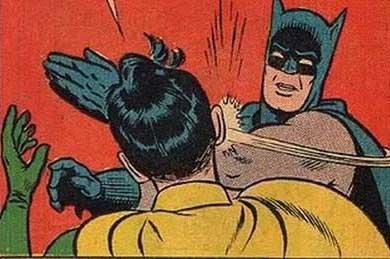1) Human movement isn’t always as simple as basic kinesiology and anatomy. James Speck gives a great example of this in his detailed article describing the soleus as a knee extender. “When a muscle contracts, it doesn’t think about which direction in needs to pull. It just shortens.”
2) More on pain science: “…they used newer MRI technology to see how flexible people could be in responding to pain. The mind-wanderers were more flexible.” Pain isn’t a pathological structure; it’s a central processed perception.
3) I recently had a medial elbow tendinosis patient. When I screened him with the SFMA his single leg balance was terrible. He had some severe ankle/foot stability deficits. This study was in a recent JOSPT. Regional interdependence. SFMA.
4) Dr. Andreo Spina is a very smart man and has done more research than most. You should read this interview from Patrick Ward’s site. “…BioFlow anatomy, it can be generally defined as a term used to describe, and conceptualize the extent of continuity found in human tissue at the microscopic level…Specifically how tissues seemingly ‘flows’ from one form to another. This concept vastly alters not only ones perception of anatomy, but also their understanding of tissue assessment, treatment, rehabilitation, and training.”
5) Wait, what? Bacteria directly activates sensory nerves (not via inflammatory mediators). New immune-pain concepts.
6) Postural Restoration Institute (PRI) is a great addition to any rehab approach. I made this table to help myself understand some of the concepts of their postural respiration course.
7) Erson has 5 MDT Exercises for the Cervical Spine. “All of your magic hands hocus pocus means nothing if the patient cannot keep the improvements between visits.”
8) Interesting reflective post from David Butler. “What bugs me is that it took so long to realize that it was I myself who was probably the main variable in outcomes – not the techniques.”
9) “Mechanotransduction refers to the process by which the body converts mechanical loading into cellular response.”-KM Khan. Mechanotransduction is an extremely important aspect of rehabilitation as it promotes tissue repair and remodeling. Learn more about it from Khan in this podcast (article in website).
10) Crawling is more than just physical reciprocal movement. It activates reciprocal brain activity. Meaning the left and right hemispheres must communicate with each other to coordinate the movement. This developmental functional movement is the basis for Primal Move. Look at their reference page for more information.
11) Seth Oberst has a great article on prioritizing motor control for mobility. ” it’s also likely that underlying poor motor control of the spine is negatively affecting mobility and ultimately performance of the extremities and spine.”
12) It’s amazing how many people think MDT (McKenzie) is just an extension based exercise system. It’s a lot more than extension and exercise. Check out this months post for more information.
13) The Gait Guys do a nice neuro review of facilitation. “When a stimulus takes them closer to firing, we say they are “facilitating” the neuron. If it affects a “pool” of neurons, then that neuronal pool is facilitated. If that pool of neurons happens to fire extensor muscles, then that “extensor pool” is facilitated.”
14) A Weingroffism on an olympic lifting patient with medial elbow pain: C-6/7 innervates the medial elbow. A hyperextended neck during lifts compresses C6-7 facets and irritates nerve roots. Nerves can cause inflammation (neurogenic inflammation). Proximal influence of elbow pain. PACK YOUR NECK!




